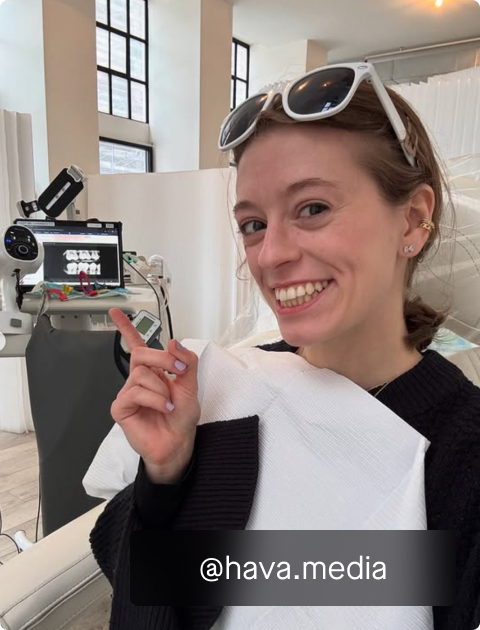Don’t let spots and bumps bum you out

Did you wake up, look in the mirror and wonder what that new white spot on your gums is? It doesn’t hurt, so it must be fine right? While most spots or bumps in your mouth are harmless and will disappear or stay unchanged, there are some that can be serious and require seeing a dentist. Here are some things to know before your dentist visit.
What causes these spots or bumps?
It depends! Spots or bumps on the gums or around the mouth can be caused by a variety of reasons, including bacterial, viral or fungal infections. Some common causes are canker sores, cold sores, leukoplakia and oral thrush.
There are other common causes:
- Irritations against the tissue, for example from dentures that don’t fit properly
- Loose orthodontic wires or the sharp edge of a broken filling
- Sensitivity to certain toothpastes or mouthwashes
- Medication, cancer treatment side effects or reaction to therapy
- Certain specific skin, oral or systemic diseases
If you are unsure or concerned about certain spots or bumps within your mouth, it is always best to see a dentist for confirmation.
Ok, that makes sense! What should I know before I see my dentist?
We’re big believers in being informed patients. It increases your confidence and reduces stress when talking to your dentist and allows you to ask the right clarification questions. Because of that, we’ve described in more detail what the most common causes of those spots and bumps could be.
Cold Sore
Cold sores are a type of viral infection, caused by the herpes virus, and typically look like clusters of small, red, fluid-filled blisters on the lips, but they can also show up on the gums near your teeth or on the roof of your mouth. It is important to note that they are contagious. You might not have noticed the first time you got infected though, as it often occurs before adulthood. You may have mistaken it with a cold or the flu, or you may not have experienced symptoms at all. But once you are infected, the virus stays in your body, often inactive. Unfortunately, for some people, the virus might activate periodically from a variety of irritants such as wind, sun, fever and stress.
Canker Sore
Canker sores usually start off as a tingling red spot or bump, but develop into small painful ulcers, with a white, yellow or gray center and a flat red border on the lips. They can also show up on the gums near your teeth or on the roof of your mouth. The exact cause of canker sores is unknown, but genetics due play a role. For some people, stress, fatigue or certain foods can increase the possibility of getting canker sore, for others it could form from biting the inside of their cheek. Canker sores aren’t contagious or precancerous, but there is no permanent cure for them and most medications are to treat the discomfort or pain.
Leukoplakia
Leukoplakia sounds complicated, but it’s basically a white or gray patch that develops anywhere inside your mouth. It’s caused when cells in the lining of your mouth have grown excessively. It’s often a response to some form or chronic irritation, for example smoking, cheek biting, certain foods or broken teeth, and they form slowly over a period of time. It is usually not sensitive or painful.
Leukoplakia is generally harmless, but there is a risk that it could become cancerous, so it is important to talk to a dentist to rule it out.
Oral Thrush
Oral thrush, also known as Candidiasis, is a type of fungal infection and typically looks like creamy white and red patches that form on the surfaces inside your mouth. It can be painful and can also cause bad breath, difficulty tasting or swallowing. Oral thrush usually occurs when a certain type of yeast reproduces in large numbers inside your mouth. This might happen when you are on antibiotics that are suppressing your immune system or from dry mouth.
Got it. So when should I see a dentist? And is there anything I should do to prepare or ask the dentist?
Anytime you are concerned or unsure about a spot or bump, it is a good idea to get connected with a dentist. This way you aren’t speculating on what you might or might not have. And while most sores aren’t painful, if they persist for more than two weeks, that is also a sign to contact a dentist. A dentist will be able to triage your problem and determine the next best steps. They may also perform a biopsy of the tissue to figure out what it is.
If you have questions like this, join our waitlist to get your invite to be a Wally member where you can take advantage of unlimited cleanings, whitening, and exams.









